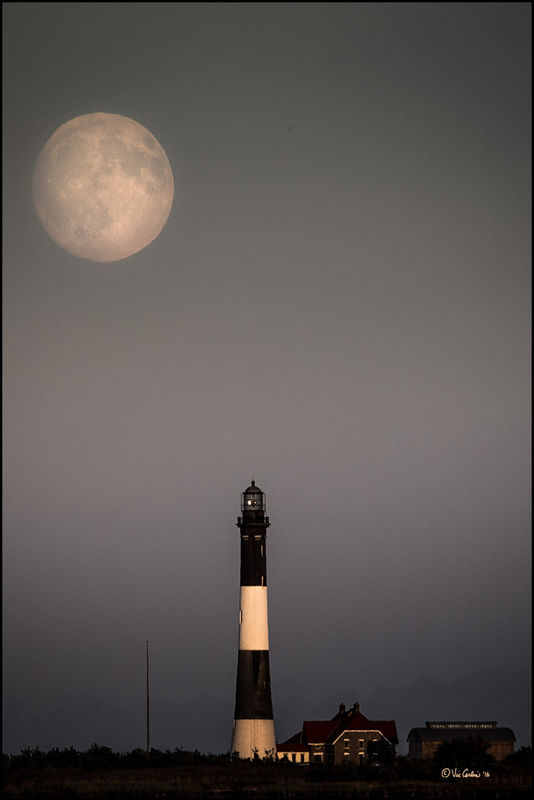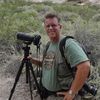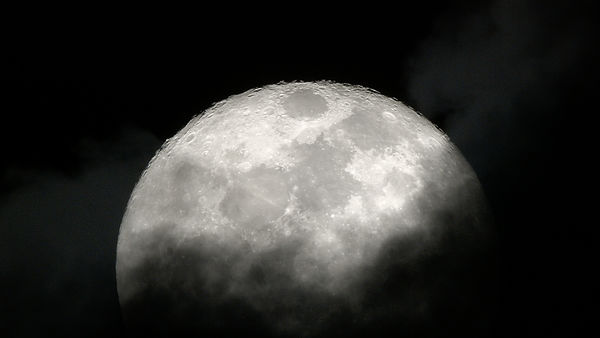Capturing the Supermoon Nov 14
Nov 10, 2016 23:13:28 #
Thanks. I just bought a Tamron 150-600mm lens. I'll practice with it this weekend.
Blurryeyed wrote:
Personally I would start with ISO 100 and set the camera to M and select an f/8 aperture and shoot at 1/200th review the picture and adjust the shutter speed accordingly so best capture the shadows of the craters. It will be a little tough with a 300mm lens, but I am sure that you will get a few keepers.
Nov 11, 2016 06:29:40 #
rmalarz wrote:
To be honest, you are going to get a collection of suggestions that will boggle the mind. My best suggestion is take your camera, put it on a tripod, take a number of photos of the moon over the next couple of nights. Note your settings for each exposure you make. Pick the one you like the best and use that one. The moon is going to be near full for the next few days and that would be your best bet. Oh, and it's a bit brighter than you might think.
--Bob
--Bob
bingo, they will drive you nuts. most of my moon shots are hand held I am learning my df is a great tool.
Nov 11, 2016 06:42:58 #
drjvigil wrote:
I am a novice photographer and want to get some photos of the Supermoon this month. I have a Canon SL1 with a ES 75-300 1:4-5.6 lens. What settings, i.e., shutter speed, aperture, should I use to capture the best quality shots?
300mm or less might be all you need. If you zoom in on the moon at 400mm to 800mm then all you have is a nice photo of the moon. What you want to do is find a subject to have with the moon to show the is super size.
Note: Photo by a friend in my club.

Nov 11, 2016 06:54:16 #
drjvigil wrote:
I am a novice photographer and want to get some photos of the Supermoon this month. I have a Canon SL1 with a ES 75-300 1:4-5.6 lens. What settings, i.e., shutter speed, aperture, should I use to capture the best quality shots?
I hate to tell you this, but photographing the supermoon or the babymoon won't make any difference at all. How much will you zoom in, and how large will you view it or print it? Maybe, just maybe, you will notice a difference viewing it in the real world, but knowing that it's "super" will automatically make you think that it really is super.
Google will give you more moon links than you can read.
Nov 11, 2016 07:25:19 #
Nov 11, 2016 07:27:37 #
jerryc41 wrote:
I hate to tell you this, but photographing the supermoon or the babymoon won't make any difference at all. How much will you zoom in, and how large will you view it or print it? Maybe, just maybe, you will notice a difference viewing it in the real world, but knowing that it's "super" will automatically make you think that it really is super.
Google will give you more moon links than you can read.
Google will give you more moon links than you can read.
So true Gerry. It's not like it will look like green cheese.
Nov 11, 2016 07:55:32 #
The moon is a daylight object, being illuminated by the son like the Earth during daytime (you KNOW how bright that is.) Use a lower ISO, 100 to maybe 400 depending on the speed of the lens, and STOP down from full aperture, whatever that is. The full moon has not many interesting features like the waxing and waning moon does. Generally, stop down about two stops from wide open, which is usually gives the lens' maximum performance, and find an f/stop which brings out the details. In the full moon, all you have are the "seas" and the edges of the moon, which are a little rough under enough magnification. When in doubt "bracket" your exposure, shooting a range of shots around your best "guestimate," with each shot having about 1/2 stop of difference, generally, toward the darker. That's because: there's a lot of OVEREXPOSURE on moon shots.
Oh, as to the moon being "super," this just means the full moon coincides with the apogee (closest approach) of the moon in its orbit. There are three "supermoons" in a row at the end of this year. It's not THAT much closer, so there is only a tiny amount of difference in the moon's size. Exposure wise, well, try to get a good, detailed view without making the moon dingy.
The moon shown here with the clouds at the bottom was cool in video as the clouds quickly covered the moon, a little drama for the shot. This is a few days AFTER the full moon, with an 800mm Full Frame lens, which, with the crop factor of Super 16mm, gives the equivalent of about a 2,000mm lens. It is a fully manual lens, so I had to focus. That's what we do in the movies, a whole lot of focusing. Their is no acceptable autofocus.
Oh, as to the moon being "super," this just means the full moon coincides with the apogee (closest approach) of the moon in its orbit. There are three "supermoons" in a row at the end of this year. It's not THAT much closer, so there is only a tiny amount of difference in the moon's size. Exposure wise, well, try to get a good, detailed view without making the moon dingy.
The moon shown here with the clouds at the bottom was cool in video as the clouds quickly covered the moon, a little drama for the shot. This is a few days AFTER the full moon, with an 800mm Full Frame lens, which, with the crop factor of Super 16mm, gives the equivalent of about a 2,000mm lens. It is a fully manual lens, so I had to focus. That's what we do in the movies, a whole lot of focusing. Their is no acceptable autofocus.
Nov 11, 2016 08:27:41 #
Here is an article with some useful tips: http://www.natureworldnews.com/articles/31662/20161111/shoot-the-supermoon-like-pros-professionals-and-nasa-photographer-shares-useful-tips.htm
Nov 11, 2016 08:30:59 #
PhotoArtsLA wrote:
It's not THAT much closer, so there is only a tiny amount of difference in the moon's size.
The Moon is actually 14% closer comparing the difference between apogee and perigee. That seems significant to me.
Nov 11, 2016 09:03:28 #
drjvigil wrote:
I am a novice photographer and want to get some photos of the Supermoon this month. I have a Canon SL1 with a ES 75-300 1:4-5.6 lens. What settings, i.e., shutter speed, aperture, should I use to capture the best quality shots?
How bright the moon is depends on how far above the horizon it is ie how much and the quality of the atmosphere you are shooting through. Ad mentioned, it will advantageous to include an earth based subject in the image - especially to show scale. To do this, you should be shooting the day BEFORE the day of the "full" moon - when it rises earlier and you have a chance of more daylight illuminating your earth subject in combination with the moon.
Nov 11, 2016 09:10:08 #
russjc001
Loc: South Carolina
I have a Sony A7rii but only a 55 mm prime. So, obviously will have a very small image. However, I'll give it it try if the smoke from NC fires doesn't hinder the shots too much. 🙁 Hope to get a clean enough shot to crop for a larger image to use for composites. Anyone have much luck with this? Still waiting for the newly released 70-200 lens!
Nov 11, 2016 09:55:02 #
russjc001 wrote:
I have a Sony A7rii but only a 55 mm prime. So, obviously will have a very small image. However, I'll give it it try if the smoke from NC fires doesn't hinder the shots too much. 🙁 Hope to get a clean enough shot to crop for a larger image to use for composites. Anyone have much luck with this? Still waiting for the newly released 70-200 lens!
The 2X Clear Image Zoom can help you ...
Nov 11, 2016 11:43:48 #
If I may, the full moon is equivalent to being in the middle of a desert at high noon so the sunny 16 rule applies. Also, as the moon is a moving target the minimum hand held rule applies even if the camera is on a tripod. The more magnification, the more apparent and faster the moons movement. So a base setting would be as follows:
Shutter speed = 1/focal length (so if shooting with a 600 mm lens then 1/600 seconds [or close to that, 1/500 or 1/1000 would suffice] / 300mm lens then 1/300 second [1/250 or 1/500] etc.)
ISO set to 100 (this does not change)
Sunny 16 Aperture formula = if shutter speed
= 1/100 then f16
= 1/200 then f11
= 1/400 then f8
= 1/800 then f5.6
= 1/1600 then f4
The above will get you very close and most likely will not require any adjustments for a good moon exposure.
Can you feel the BUT coming... The above will give you a very good exposure of the moon BUT everything else will be extremely black. If you are trying to capture (and I sure hope you are) some foreground elements like the previously shown lighthouse, then you will need to take another exposure that is set for the foreground and there is no way to give you settings for that unless we were there and could meter for that particular scene. (Moon excluded) Then you would need to composite the 2 photos to give you the best of each. Good luck on Monday, looking forward to seeing what you come up with.
Shutter speed = 1/focal length (so if shooting with a 600 mm lens then 1/600 seconds [or close to that, 1/500 or 1/1000 would suffice] / 300mm lens then 1/300 second [1/250 or 1/500] etc.)
ISO set to 100 (this does not change)
Sunny 16 Aperture formula = if shutter speed
= 1/100 then f16
= 1/200 then f11
= 1/400 then f8
= 1/800 then f5.6
= 1/1600 then f4
The above will get you very close and most likely will not require any adjustments for a good moon exposure.
Can you feel the BUT coming... The above will give you a very good exposure of the moon BUT everything else will be extremely black. If you are trying to capture (and I sure hope you are) some foreground elements like the previously shown lighthouse, then you will need to take another exposure that is set for the foreground and there is no way to give you settings for that unless we were there and could meter for that particular scene. (Moon excluded) Then you would need to composite the 2 photos to give you the best of each. Good luck on Monday, looking forward to seeing what you come up with.

Nov 11, 2016 12:11:49 #
billnikon
Loc: Pennsylvania/Ohio/Florida/Maui/Oregon/Vermont
drjvigil wrote:
I am a novice photographer and want to get some photos of the Supermoon this month. I have a Canon SL1 with a ES 75-300 1:4-5.6 lens. What settings, i.e., shutter speed, aperture, should I use to capture the best quality shots?
Simple, the moon's exposure is 1/iso at F16. So, if your iso is 100, then your base exposure would be 1/100 sec. at F16. Now, that a few shots both ways and see which you like best. Example. iso 100 would be 1/100 sec. at F8, between F8 and F11, F 11, between F11 and F16, F16, between F16 and F22, and finally F22. If you need darker, go to the next highest shutter speed, 1/200 sec. and repeat until you get it right.
Nov 11, 2016 12:12:27 #
imagemeister wrote:
How bright the moon is depends on how far above the horizon it is ie how much and the quality of the atmosphere you are shooting through. Ad mentioned, it will advantageous to include an earth based subject in the image - especially to show scale. To do this, you should be shooting the day BEFORE the day of the "full" moon - when it rises earlier and you have a chance of more daylight illuminating your earth subject in combination with the moon.
This, is for a SINGLE exposure combining both. I guess you can do multiple off setting exposures and combine them in post - if - you know what you are doing and have the software.
If you want to reply, then register here. Registration is free and your account is created instantly, so you can post right away.







